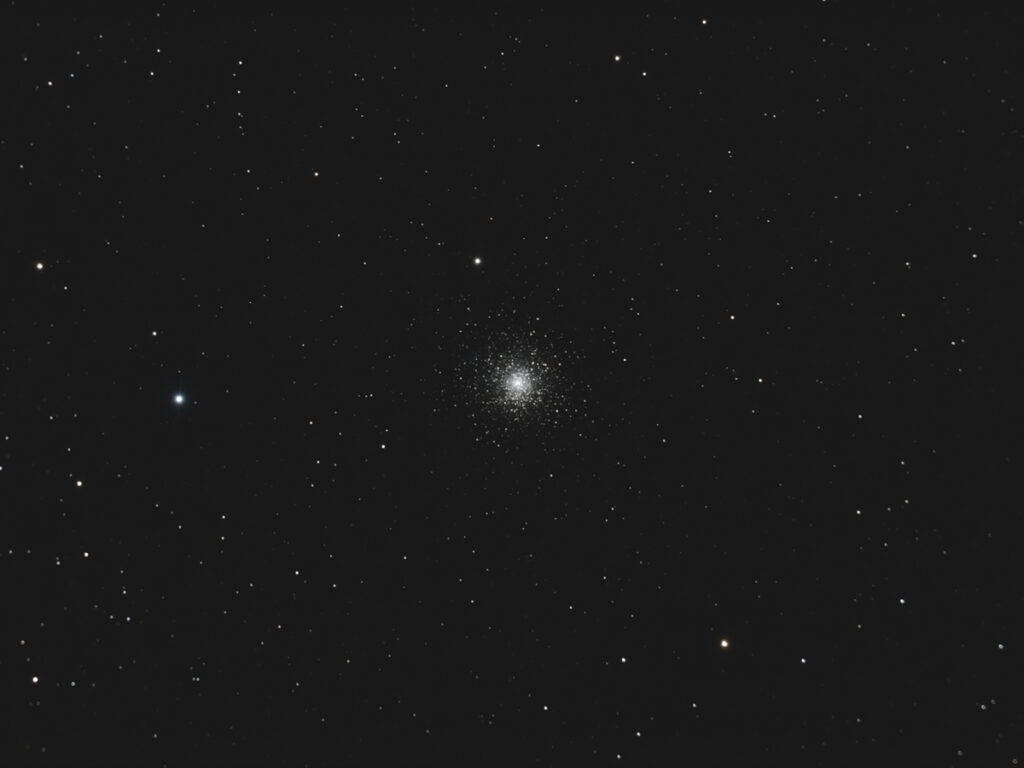
Telescope: Meade 10” LX850 ACF @ f/8, Orion Atlas EQ-G
Camera: Canon EOS Ra
Filter: GSO IR Blocking Filter
Guide scope: Orion 50mm, ASI120MM Mini, PHD2
Exposure: 52x60sec, ISO 800, saved as Raw
Darks: Internal (Long Exposure Noise Reduction On)
Flats: 32x1sec, Tee shirt flats taken at dusk
Average Light Pollution: Red zone, Bortle 8, fair transparency
Lensed Sky Quality Meter: 18.6
Stacking: Mean with a 1-sigma clip.
White Balance: Nebulosity Automatic
Software: Backyard EOS, Deep Sky Stacker, Nebulosity, Photoshop
M15, a bright, condensed globular cluster in a relatively lonely stretch of sky in Pegasus. It is one of the oldest known globular clusters with an estimated age of 13.2 billion years and the first globular cluster found to have a planetary nebula (Pease 1), one of only four planetary nebula associated with a globular cluster. M15 is also one of the most condensed globular cluster and at some point in the distant past it experienced a core collapse that may have heralded the formation of a black hole in its nucleus. This is supported by the fact the M15 is an x-ray source.
M15 is currently well placed in the southeast as the sky darkens.
Recent Comments